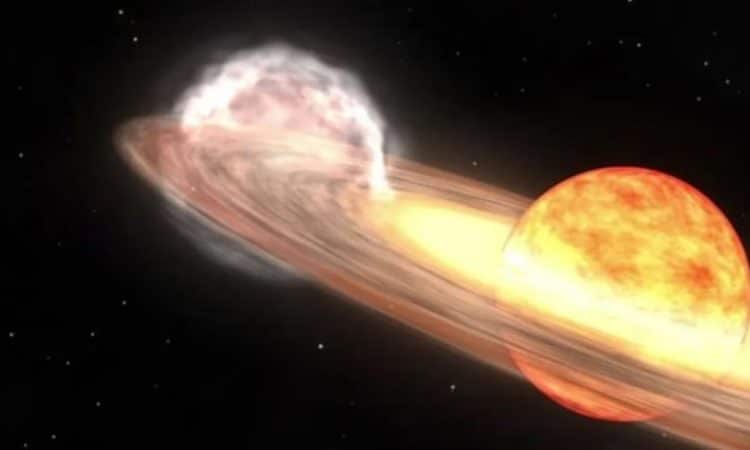
The star T Coronae Borealis (TCrB), which appears every 80 years, will soon be visible in the night sky all over the Northern Hemisphere. It is a nova. Astrophysicist Robert Lamontagne explains that the phenomenon is the result of the explosion of two orbiting stars (one dead, the other active), one revolving around the other.
The Phenomenon Explained
Mr. Lamontagne explains that, as time passes, the active star pours gas onto the surface of the dead star. “The gas slowly builds up. The pressure builds up, and every 80 years or so, there’s a thermonuclear explosion on the surface of the dead star, called a white dwarf,” explains Mr. Lamontagne. For a few days to a week, the star suddenly becomes much brighter, and from our point of view, there’s a “new star” appearing in the sky.
When the explosion occurs, the brightness increases tenfold and becomes bright enough to be seen by the naked eye.
Anticipated Observation
Mr. Lamontagne points out that the last explosion dates back to 1946. “It’s estimated that, probably by September, the eruption will occur. We’ll be able to observe the phenomenon,” says astrophysicist Lamontagne.
A Distant Phenomenon
The phenomenon occurs at a distance of 3,000 light-years, according to Lamontagne. He explains that the light from the explosion takes 3,000 years to reach us. “If we observe the star between now and September, it will be at least 3,000 years since the flare occurred,” he adds.
Excitement Among Amateur Astronomers
Tom Sobocan, an amateur astronomer and member of the Royal Astronomical Society of Canada, Windsor Club, can’t wait to see the phenomenon unfold before his eyes. “I can’t wait to see this star, which I’ve never seen before in my life,” he says. “It’s going to be right over our heads.”
Preparing to Experience the Phenomenon
Lamontagne explains that it won’t necessarily be a brighter star than others for the uninitiated. “It will be comparable in brilliance to the North Star,” he points out. He suggests consulting NASA’s Sky, Telescope, Sky Safari website, or typing in keywords such as nova, T star, northern crown constellation or TCrB into the search engine for details when the phenomenon occurs.
Mr. Sobocan adds that no night goes by without him scanning the sky. “Every night, when the sky is clear, I look at the sky, even if it’s only for a few minutes,” he says. His club is preparing to immortalize the event. “Our astronomy club will be taking photos of this part of the sky with our telescopes,” he says.
A Good Opportunity for Scientists
According to Steve Pellarin, professor of astronomy at the University of Windsor and vice-president of the Windsor chapter of the Royal Astronomical Society of Canada, the event will give scientists a chance to learn more about these kinds of phenomena. “By understanding this prototype, it can also help us make predictions about all the other types,” Pellarin hopes.
Robert Lamontagne points out that the phenomenon has been observed in the sky for 800 years.
Don’t miss this rare opportunity to witness a celestial event that happens only once every 80 years!

